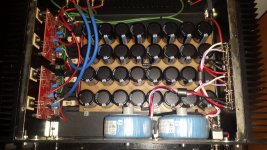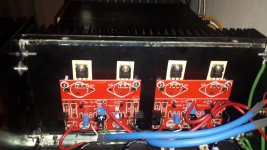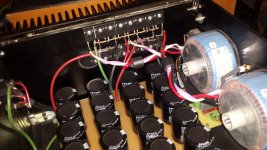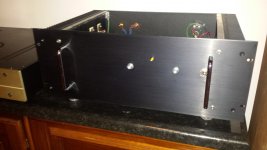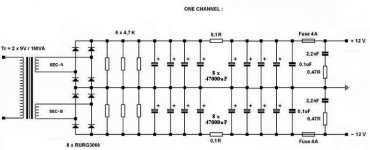Few more pics,
Amp boards completed:
Test fit:
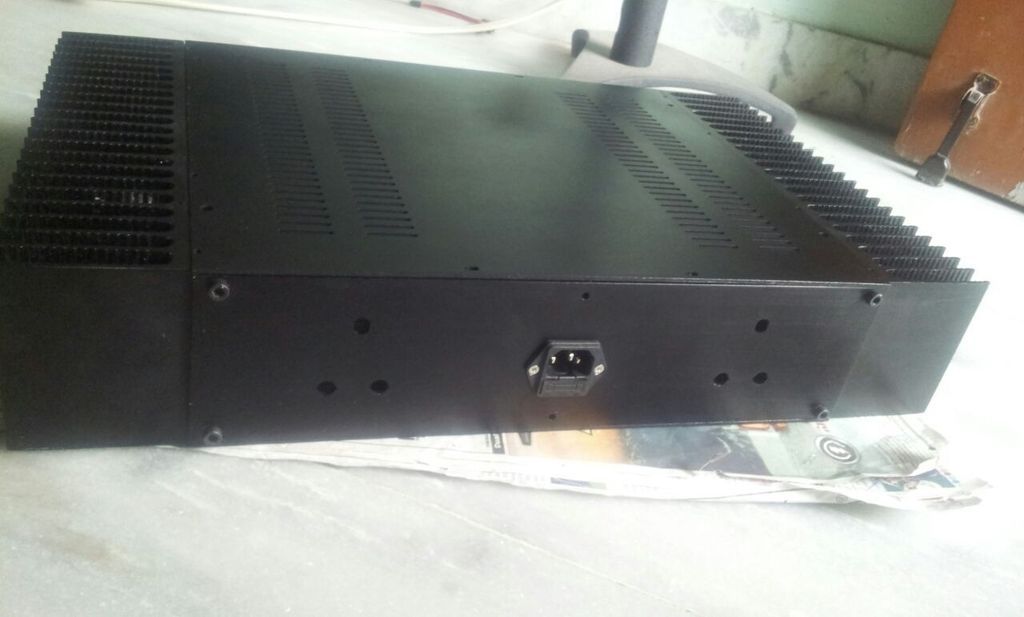
Faceplate is still undecided between 10mm Teak wood or 8mm Aluminium.
Regards
Sachin
Amp boards completed:
An externally hosted image should be here but it was not working when we last tested it.
An externally hosted image should be here but it was not working when we last tested it.
Test fit:
An externally hosted image should be here but it was not working when we last tested it.
An externally hosted image should be here but it was not working when we last tested it.
An externally hosted image should be here but it was not working when we last tested it.
An externally hosted image should be here but it was not working when we last tested it.
An externally hosted image should be here but it was not working when we last tested it.

An externally hosted image should be here but it was not working when we last tested it.
An externally hosted image should be here but it was not working when we last tested it.
An externally hosted image should be here but it was not working when we last tested it.
An externally hosted image should be here but it was not working when we last tested it.
An externally hosted image should be here but it was not working when we last tested it.
Faceplate is still undecided between 10mm Teak wood or 8mm Aluminium.
Regards
Sachin
Last edited:
Finally my friend has completed it yesterday night. He has sent me few pics and audio clips. Amp is running continuously since yesterday night. It is running warm, all transistors are running warm. This has very good gain and sound quality is very good. Highs and Mids are excellent, bass is little less compared with his El84 SE amp.
I must add that PCB layout is excellent.It runs without any hum, hiss etc. We are using cap multiplier Power supply. Transformer is 12-0-12, 320VA. Voltage is 12/0/-12. We are using 560R bias resisters.Amplifier is biased for 1A. DC offset is adjusted below 5mv.
My friend has built very good quality all Aluminium Cab with thick Teak wood faceplate.
Here are some pics:
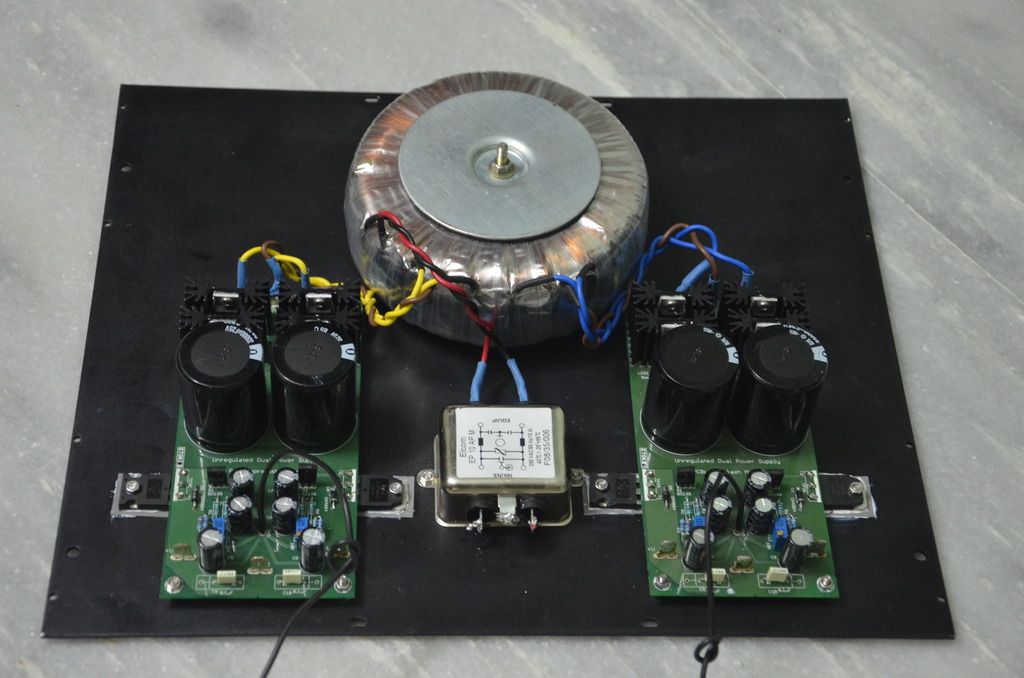
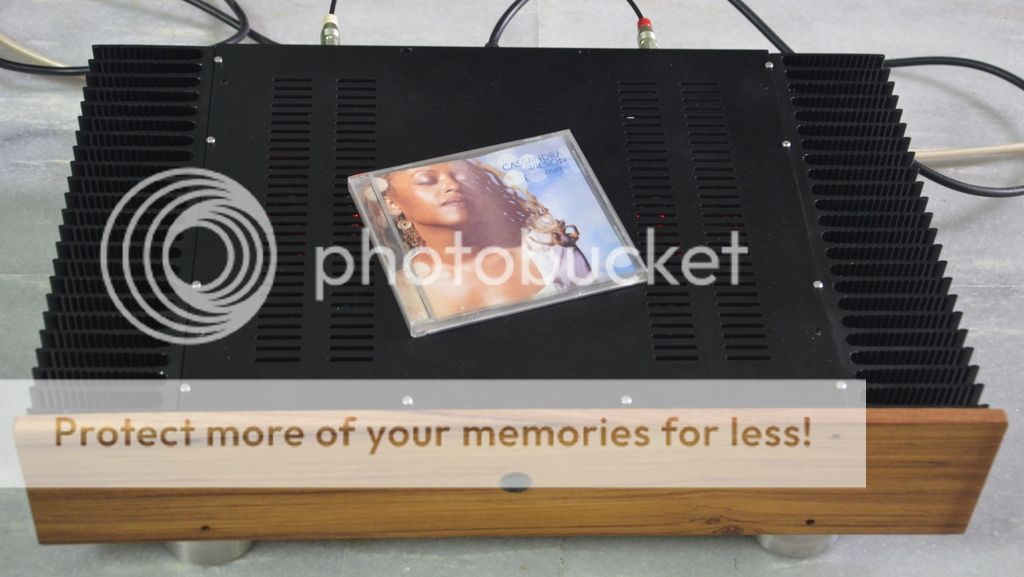
Faceplate is still raw and feet are temporary. It will look much better after final finishing.
Regards
Sachin
I must add that PCB layout is excellent.It runs without any hum, hiss etc. We are using cap multiplier Power supply. Transformer is 12-0-12, 320VA. Voltage is 12/0/-12. We are using 560R bias resisters.Amplifier is biased for 1A. DC offset is adjusted below 5mv.
My friend has built very good quality all Aluminium Cab with thick Teak wood faceplate.
Here are some pics:

An externally hosted image should be here but it was not working when we last tested it.
An externally hosted image should be here but it was not working when we last tested it.
An externally hosted image should be here but it was not working when we last tested it.
An externally hosted image should be here but it was not working when we last tested it.

An externally hosted image should be here but it was not working when we last tested it.
An externally hosted image should be here but it was not working when we last tested it.
An externally hosted image should be here but it was not working when we last tested it.
An externally hosted image should be here but it was not working when we last tested it.
An externally hosted image should be here but it was not working when we last tested it.
Faceplate is still raw and feet are temporary. It will look much better after final finishing.
Regards
Sachin
Last edited:
Another Le Monstre!
Hello guys.
I am writing to share about my third realization of the monster. (I had made two other of which one is already shown in previous pages of the thread).
The building is completely dual mono.
The power supply (+/- 12.5V) is made of two transformers from 100VA with two 9-0-9 separate secondary.
Diodes are RURG 3060 and feed two independent branches from 0.75F each, for a total capacity of 1.5 F made from 32 x 47000uf / 16Vcc Epcos capacitors.
I bought PCBs on ebay from the store Jims Audio (very well build quality!).
Regarding jfet, I used the J103 and K246 matched with idss of 1.5mA.
The other transistors are BC550C and BC560C from Onsemi matched with 550 HFE.
The output transistors are the type 2SB754 and 2SD844 by Inchangé Semiconductor, (chinese brand but good devices).
For now, instead of the bias resistors, I put a 1Kohm trimmer, so I can do some testing about the bias current, (now is 590mA for branch and think it's a good compromise).
The result looks good for now. The amplifier is very stable and the output offset is practically nothing (1,5mV per channel), with no noises or hums.
The cooling fins reach a temperature of about 42 ° C after about 30 minutes power on.
The sonic result is excellent! Perhaps the best of the three that I have built up to now!
After this, I believe that having a lot of energy reserve is a very important thing for the end result that this amplifier can reach!
Once again, I am convinced that this is an SS amplifier of absolute reference and unfortunately is still very under estimated...
Maybe because It can be achieved with a not so expensive cost, and does not need an aluminum frontal of two centimeters thick!
Here there is the power supply schematic, and some shots (not excellent quality I know )
)
Any advice, suggestion or recommendation is really welcome!
CIAO!
Hello guys.
I am writing to share about my third realization of the monster. (I had made two other of which one is already shown in previous pages of the thread).
The building is completely dual mono.
The power supply (+/- 12.5V) is made of two transformers from 100VA with two 9-0-9 separate secondary.
Diodes are RURG 3060 and feed two independent branches from 0.75F each, for a total capacity of 1.5 F made from 32 x 47000uf / 16Vcc Epcos capacitors.
I bought PCBs on ebay from the store Jims Audio (very well build quality!).
Regarding jfet, I used the J103 and K246 matched with idss of 1.5mA.
The other transistors are BC550C and BC560C from Onsemi matched with 550 HFE.
The output transistors are the type 2SB754 and 2SD844 by Inchangé Semiconductor, (chinese brand but good devices).
For now, instead of the bias resistors, I put a 1Kohm trimmer, so I can do some testing about the bias current, (now is 590mA for branch and think it's a good compromise).
The result looks good for now. The amplifier is very stable and the output offset is practically nothing (1,5mV per channel), with no noises or hums.
The cooling fins reach a temperature of about 42 ° C after about 30 minutes power on.
The sonic result is excellent! Perhaps the best of the three that I have built up to now!
After this, I believe that having a lot of energy reserve is a very important thing for the end result that this amplifier can reach!
Once again, I am convinced that this is an SS amplifier of absolute reference and unfortunately is still very under estimated...
Maybe because It can be achieved with a not so expensive cost, and does not need an aluminum frontal of two centimeters thick!
Here there is the power supply schematic, and some shots (not excellent quality I know
Any advice, suggestion or recommendation is really welcome!
CIAO!
Attachments
Last edited:
Sorry to hijack this thread. I come here because Hiraga is always low power amp that a lot of people like it here. I am designing my first amp and I am very confuse.
I came from guitar amp where it's all tube, that 35W is way way too loud. I always consider 40W is plenty for stereo use. So my design is high bias current to get a larger Class A region, using lower rail voltage to limit the idle dissipation to below 70W to get about 12W of pure Class A and about 60W of total power per channel.
But there is another school of thought here that they are willing to sacrifice the Class A region to lower the idle dissipation, then use high rail voltage to make sure nothing gets clipped. Quite a few very experienced and well respected members here claimed they heard notable improvement when they just change to a higher rail voltage of the amp. they are willing to forgo Oliver's condition and only have about 12mV across the emitter resistor of the power transistors instead the standard 26mV for Oliver's condition.
I understand both side of the argument and both side make sense electrical wise. BUT at the same time theory does not necessary translate to real life listening which is where my knowledge runs out. I want to hear from the other side (people that like Hiraga type of low power/Class A) what is their real life listening experience on this.
It is obvious that the 20W amp here is going to clip at very high dynamic range. Also it is obvious that lowering bias and increasing rail is going to see the crossover distortion at very low output level. So how does these all translate to listening?
thanks
Alan
I came from guitar amp where it's all tube, that 35W is way way too loud. I always consider 40W is plenty for stereo use. So my design is high bias current to get a larger Class A region, using lower rail voltage to limit the idle dissipation to below 70W to get about 12W of pure Class A and about 60W of total power per channel.
But there is another school of thought here that they are willing to sacrifice the Class A region to lower the idle dissipation, then use high rail voltage to make sure nothing gets clipped. Quite a few very experienced and well respected members here claimed they heard notable improvement when they just change to a higher rail voltage of the amp. they are willing to forgo Oliver's condition and only have about 12mV across the emitter resistor of the power transistors instead the standard 26mV for Oliver's condition.
I understand both side of the argument and both side make sense electrical wise. BUT at the same time theory does not necessary translate to real life listening which is where my knowledge runs out. I want to hear from the other side (people that like Hiraga type of low power/Class A) what is their real life listening experience on this.
It is obvious that the 20W amp here is going to clip at very high dynamic range. Also it is obvious that lowering bias and increasing rail is going to see the crossover distortion at very low output level. So how does these all translate to listening?
thanks
Alan
Last edited:
Hello Alan.
About what you asked I can tell you something about my (though not much) experience with the Le Monstre
I built three different Le Monstre amplifiers very similar to each other about the circuit.
Already on the first monster that I built, I got to experience the increase in power as I replaced the transformers with others by which one reached a dual voltage of +/- 15V.
This is because the person to whom it was building was in love with the sound but needed more power to drive the JBL L220 in a fairly large room.
So I tried to increase the supply voltage of up to +/- 15V leaving the bias current approximately 600 mA. In that case the power increases by 8watt about 13 if not 14 watts, then for sure if you wanted, you could increase the voltage dual smoothly, (someone says it can be increased up to +/- 20V without problems, but I still do not I never tried it).
Objectively, the increase in power is palpable in some cases. (It will seem absurd but the 14 watts can drive fantastically speakers also "challenging" in the right circles).
The last one I built and I intend to keep to myself is a 8watt; more than enough for my speakers, (I have a pair of Fostex Fe163EnS in back loaded horn enclosure).
In principle, I can tell you that I think is the best version 8watt as sound. Gentleness, naturalness, (and still driving down than the Watts that actually has), are astounding.
To my (still modest) experience a nice difference is the total amount of capacity that is used in the power supply.
I think that to make a good 8 watts (and also 15 why not?), the amount of capacity MUST to be a lot to have the best results! (you can read why in the original le Monstre article).
Other speakers on which I got to try out the Monster were Tannoy GRF and klipsh la Scala. In both cases, the monster did not have any problem to drive both kind of speakers, but these are obviously easier to drive than the JBL L220 ...
One thing however is certain about: all the people I know who have heard the monster, they were in love with it.
That is how I can tell you about my (not many) experience.
CIAO!
About what you asked I can tell you something about my (though not much) experience with the Le Monstre
I built three different Le Monstre amplifiers very similar to each other about the circuit.
Already on the first monster that I built, I got to experience the increase in power as I replaced the transformers with others by which one reached a dual voltage of +/- 15V.
This is because the person to whom it was building was in love with the sound but needed more power to drive the JBL L220 in a fairly large room.
So I tried to increase the supply voltage of up to +/- 15V leaving the bias current approximately 600 mA. In that case the power increases by 8watt about 13 if not 14 watts, then for sure if you wanted, you could increase the voltage dual smoothly, (someone says it can be increased up to +/- 20V without problems, but I still do not I never tried it).
Objectively, the increase in power is palpable in some cases. (It will seem absurd but the 14 watts can drive fantastically speakers also "challenging" in the right circles).
The last one I built and I intend to keep to myself is a 8watt; more than enough for my speakers, (I have a pair of Fostex Fe163EnS in back loaded horn enclosure).
In principle, I can tell you that I think is the best version 8watt as sound. Gentleness, naturalness, (and still driving down than the Watts that actually has), are astounding.
To my (still modest) experience a nice difference is the total amount of capacity that is used in the power supply.
I think that to make a good 8 watts (and also 15 why not?), the amount of capacity MUST to be a lot to have the best results! (you can read why in the original le Monstre article).
Other speakers on which I got to try out the Monster were Tannoy GRF and klipsh la Scala. In both cases, the monster did not have any problem to drive both kind of speakers, but these are obviously easier to drive than the JBL L220 ...
One thing however is certain about: all the people I know who have heard the monster, they were in love with it.
That is how I can tell you about my (not many) experience.
CIAO!
You've hit on two of the key differences between amplifiers: how they behave when clipped and how they behave at very low signal levels.It is obvious that the 20W amp here is going to clip at very high dynamic range. Also it is obvious that lowering bias and increasing rail is going to see the crossover distortion at very low output level. So how does these all translate to listening?
One of the main reasons for valves in guitar is that their overload characteristics are 'nicer' that a conventional transistor amp - the Hiraga has similarly better behaviour. But really efficient speakers help more so!
Member
Joined 2009
Paid Member
- Home
- Amplifiers
- Solid State
- Hiraga "Le Monstre"




